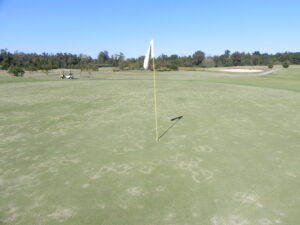
Fungicides "Not Working"? - Not So Fast!
Turf diseases are a change in structure and/or function of the plant caused by the continuous irritation of a …



El inglés es el idioma de control de esta página. En la medida en que haya algún conflicto entre la traducción al inglés y la traducción, el inglés prevalece.
Al hacer clic en el enlace de traducción se activa un servicio de traducción gratuito para convertir la página al español. Al igual que con cualquier traducción por Internet, la conversión no es sensible al contexto y puede que no traduzca el texto en su significado original. NC State Extension no garantiza la exactitud del texto traducido. Por favor, tenga en cuenta que algunas aplicaciones y/o servicios pueden no funcionar como se espera cuando se traducen.
Inglês é o idioma de controle desta página. Na medida que haja algum conflito entre o texto original em Inglês e a tradução, o Inglês prevalece.
Ao clicar no link de tradução, um serviço gratuito de tradução será ativado para converter a página para o Português. Como em qualquer tradução pela internet, a conversão não é sensivel ao contexto e pode não ocorrer a tradução para o significado orginal. O serviço de Extensão da Carolina do Norte (NC State Extension) não garante a exatidão do texto traduzido. Por favor, observe que algumas funções ou serviços podem não funcionar como esperado após a tradução.
English is the controlling language of this page. To the extent there is any conflict between the English text and the translation, English controls.
Clicking on the translation link activates a free translation service to convert the page to Spanish. As with any Internet translation, the conversion is not context-sensitive and may not translate the text to its original meaning. NC State Extension does not guarantee the accuracy of the translated text. Please note that some applications and/or services may not function as expected when translated.
Collapse ▲
Turf diseases are a change in structure and/or function of the plant caused by the continuous irritation of a …
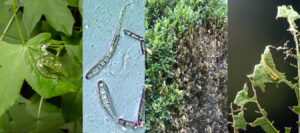
UPDATE: Registration for the course is closed The Plant Disease and Insect Clinic (PDIC) and collaborators are happy to announce …
The US Environmental Protection Agency requires that all individuals working with pesticides labeled for respiratory protection complete the following …

Ageratum conyzoides (tropic ageratum or billygoat weed) is a South American species that is now a common weed in …

No, I’m not talking about your brother-in-law. Thickhead or redflower ragleaf (Crassocephalum crepidioides) is an introduced weed that I’m …

July is the month when mum producers start seeing wilting plants due to Pythium root rot, with more cases …

In recent weeks we’ve been getting a lot of messages regarding large wasps coming to porch lights. In all …
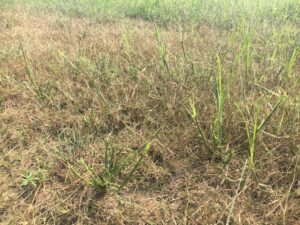
In the last week, several severe infestations of fall armyworms have been identified in Johnston County, particularly in bermudagrass …
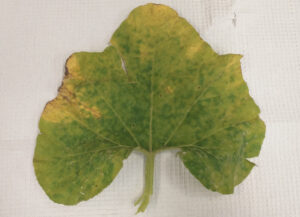
Written by Mariana Prieto-Torres, Savithri Purayannur, Mike Adams, and Lina M. Quesada-Ocampo Pseudoperonospora cubensis, the causal agent of cucurbit downy …
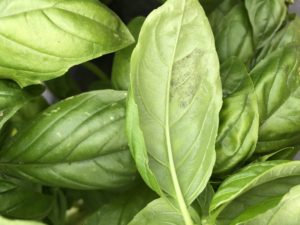
Basil downy mildew has been confirmed on the variety Genovese in a homeowner garden in Pender County, North Carolina. …
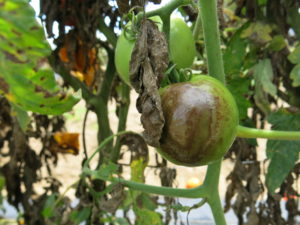
Late blight on tomato has been confirmed near Macon County, NC on July 27, 2021. UPDATE August 3, 2021: The …

As we near early August, cotton growers should be shifting their focus from early-season insects to late-season pests that …
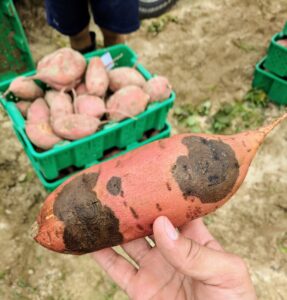
Written by Camilo H. Parada-Rojas and Dr. Lina M. Quesada-Ocampo The United States (U.S.) Environmental Protection Agency (EPA) renewed the …
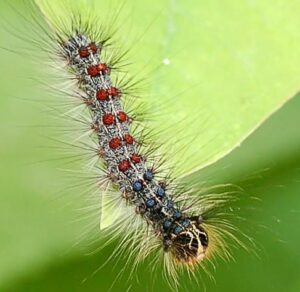
When we think of insects, rarely do we think, “Wow, look at that beautiful Danaus plexippus!” In both conversation …
Although we were spared much of the brunt of Tropical Storm Elsa, parts of North Carolina were still pummeled …

Written by Mariana Prieto-Torres, Mike Adams, Dr. Savithri Purayannur, and Dr. Lina M. Quesada-Ocampo. Pseudoperonospora cubensis, the causal agent of cucurbit …

Recent heavy rains across the state have resulted in invasions of yards and homes by what some might call …

This month, the N.C. Department of Agriculture and Consumer Services is beginning treatments for Lymantria dispar (formerly known as ‘gypsy moth’) at …
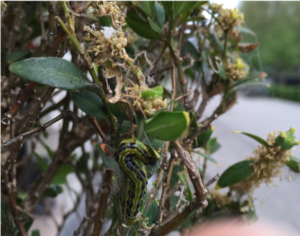
Box tree moth, Cydalima perspectalis, is native to Asia. It was introduced into Europe in 2007 and quickly spread …
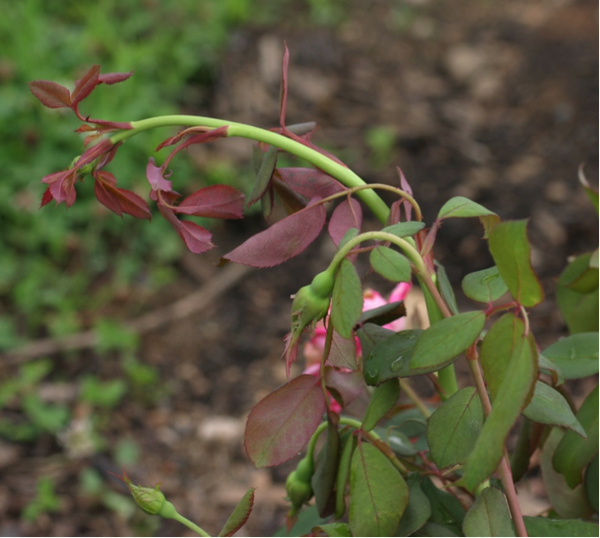
This factsheet describes the symptoms of a synthetic auxin (SA) herbicide injury.
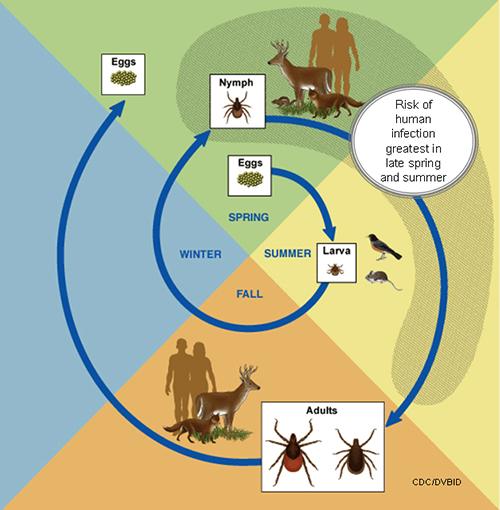
This publication will help you identify the several species of ticks found in North Carolina …

This fact sheet discusses the Ash Flower Gall Mite, a minor/aesthetic pest of ash trees.
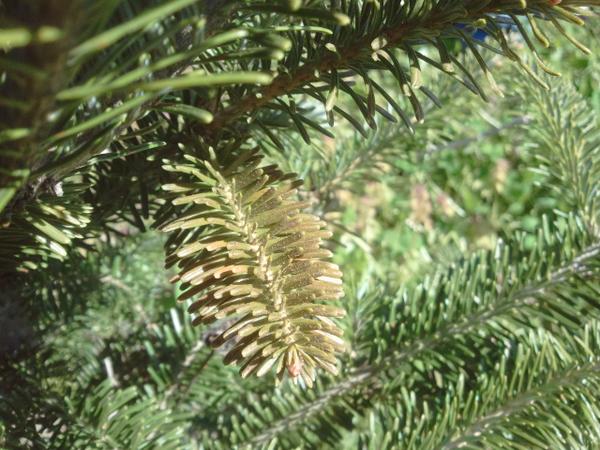
This publication describes the life cycle and control of the hemlock rust mite, which causes …
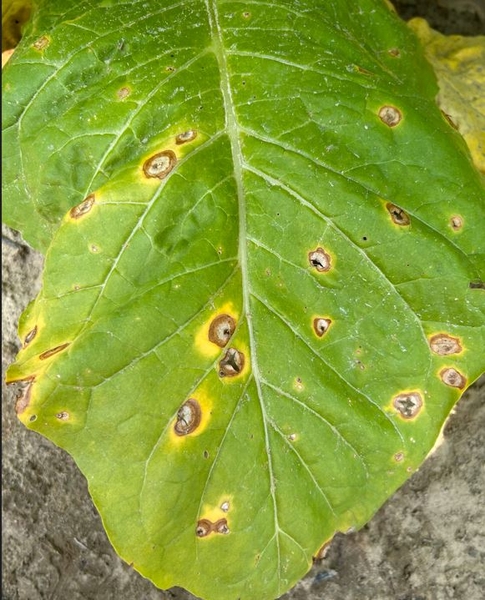
Target spot is a potentially devastating leaf spot disease in tobacco in North Carolina. This …

This factsheet describes the biology of the lesser cornstalk borer, Elasmopalpus lignosellus, and provides residential …
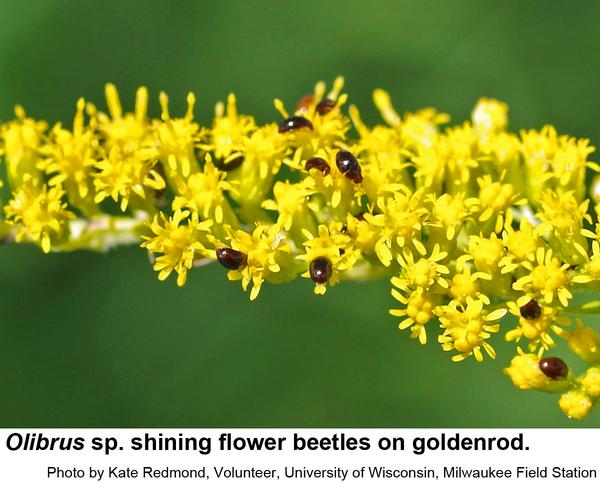
This factsheet describes the biology of the shining flower beetles, of the family Phalacridae.

This factsheet describes the symptoms of an ALS inhibitor herbicide injury.